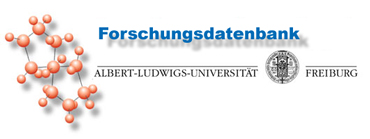| [Back to search results] |
 |

Phosphor I - Lateral transport of phosphorus along hillslopes and its relation with water age
Description of the project:Hydrological pathways form the critical link between the source of P mobilization and the P export to streams. The P mobilization processes at the plot scale are comparatively well understood, however, the knowledge of P delivery through hillslopes and headwaters is limited by the complexities of the transport scales and processes involved and the different P detachment mechanisms. Hillslopes can contribute large P fluxes to the P export, because P transport is often connected with fast flow processes, and in particular forested hillslopes are landscape units where fast flow typically occurs. Sound process knowledge of hillslope hydrological dynamics is thus highly important when assessing P transport dynamics, however, P transport studies have been conducted almost exclusively in catchments with agricultural use and knowledge transfer is problematic. In this experimental and modeling study focusing on hillslope and headwater P dynamics, we will study the effects of hydrological runoff processes for the P transport in forested hillslopes following the general idea of the SPP that the P depletion in soils drives the evolution of forest ecosystems from P-acquiring systems to P-recycling systems. We will address the effects of different flow pathways and water transit times on P transport and thereby identify hydrological conditions impeding an efficient P recycling within the rhizosphere. In particular, we hypothesize that signatures of P losses in runoff from hillslopes change along the soil-ecological gradient from acquiring systems to recycling systems and that signatures are related to water transit times and that hillslopes with fast lateral flow in preferential pathways can short-circuit otherwise efficient P recycling systems. These hypotheses will be tested at the four mountainous core sites of the SPP with a sophisticated, continuous monitoring system for lateral hillslope runoff and P transport at high temporal resolution. Event-based and continuous sampling for P species, stable water isotopes and other geogenic tracers in precipitation, runoff and groundwater will allow us to derive water ages and transit time distributions to be linked with P fluxes and P transport processes. Finally, we will further develop a process-based hillslope model simulating the different flow and transport pathways to link the internal structure and dynamics of runoff and P to the hillslope and catchment properties. The modeling will focus in particular on an adequate representation of water age and preferential flow pathways induced by “hot spots” of infiltration and P mobilization/delivery in forested hillslopes.Runtime:
contact person: Weiler, Prof. Dr. Markus
Phone: +49(0)761 203 3598
Email: markus.weiler@hydrology.uni-freiburg.de
Start of project: 01.09.2013Project Management:
End of project: 31.08.2016
Albert-Ludwigs-University Freiburg
Weiler M
Professur für Hydrologie
Friedrichstrasse 39
79098 Freiburg i. Br.
Germany
Phone: +49(0)761-203-3530
Fax: +49(0)761-203-3994
Email: hydrology@hydrology.uni-freiburg.de
http://www.hydro.uni-freiburg.de
Actual Research Report
Contributors:
- Sohrt J
- Deutsche Forschungsgemeinschaft, DFG
- Hanghydrologie, präferentielle Fließwege, Zwischenabfluss, Stabile Wasserisotope, Verweilzeiten, P-Export, P-Verlust, zeitlich hochauflösenden Messungen